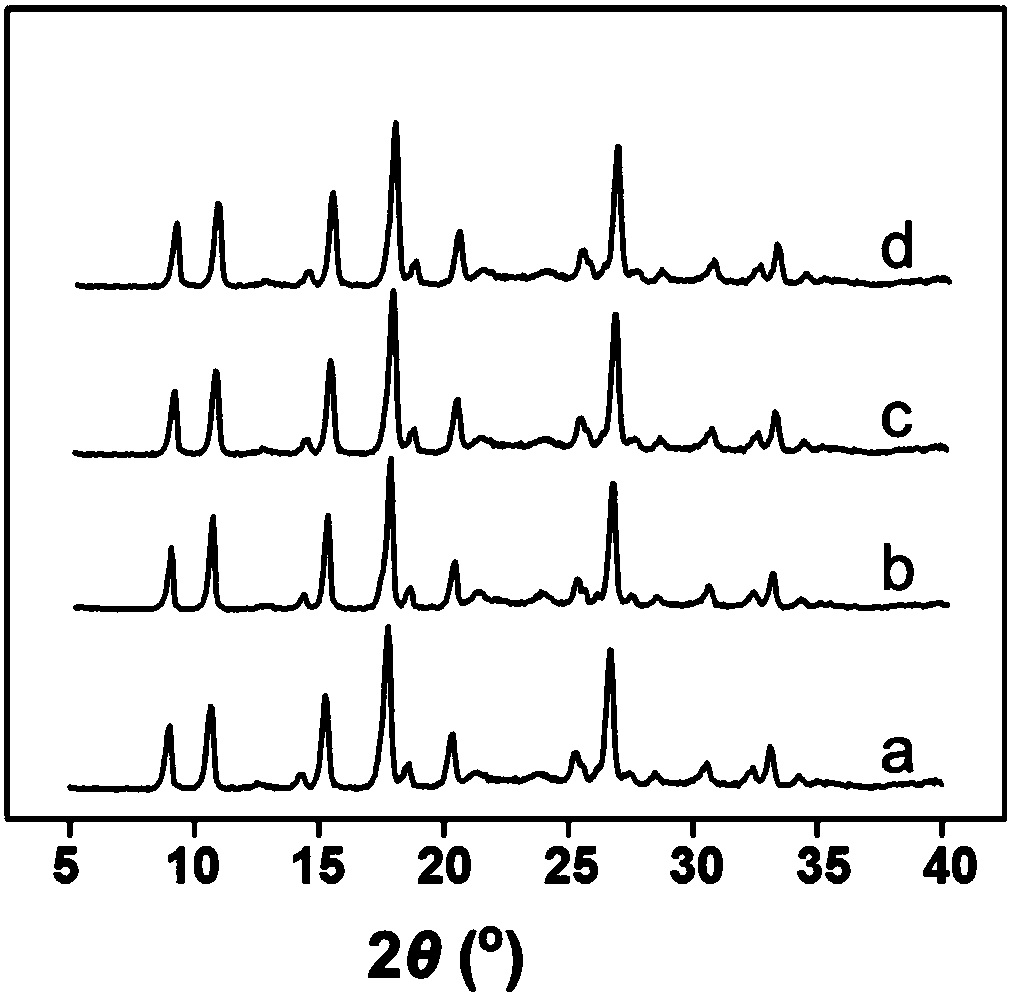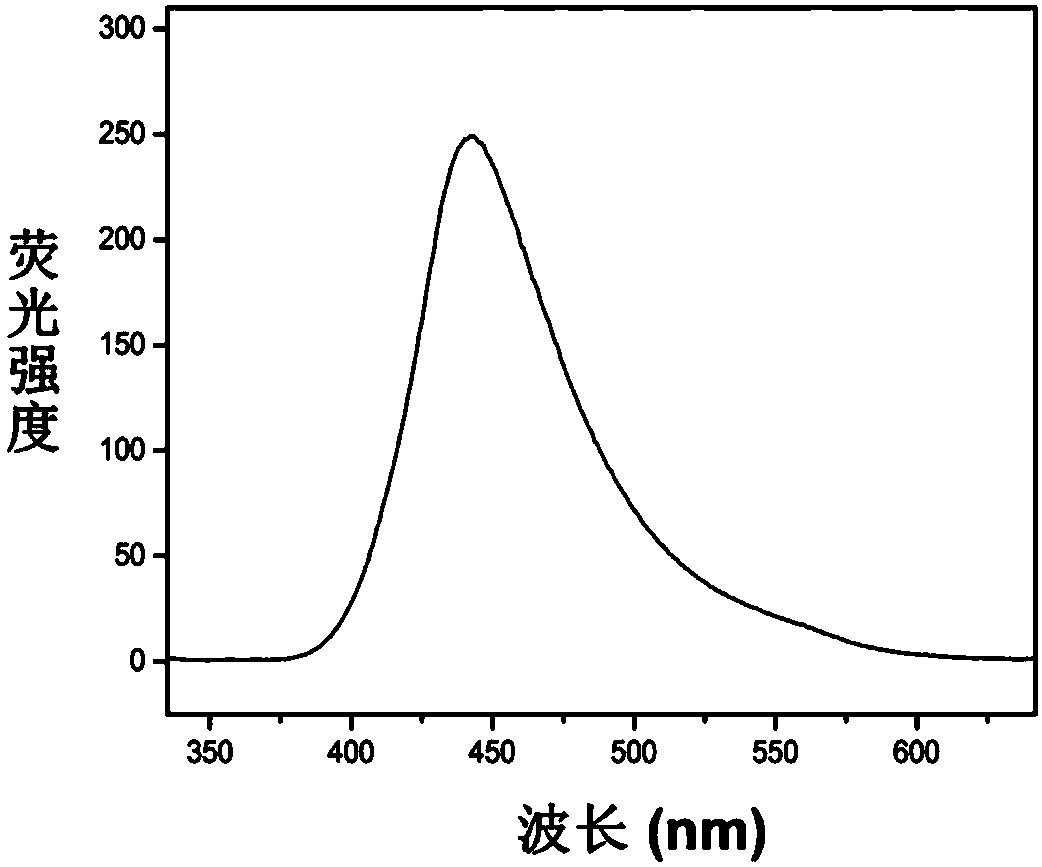Fluorescent probe based on MOF, preparation method and application of same
A fluorescent probe and MOF technology, applied in the field of fluorescent sensors, can solve the problems of low sensitivity, cumbersome operation, and long time.
- Summary
- Abstract
- Description
- Claims
- Application Information
AI Technical Summary
Problems solved by technology
Method used
Image
Examples
preparation example Construction
[0027] The present invention firstly provides a kind of preparation method of the fluorescent probe based on MOF, this method comprises:
[0028] Step 1: will contain Al 3+ Add the metal ions and 2-aminoterephthalic acid into deionized water, mix and stir evenly, and then react at 120-160°C. After the reaction is completed, centrifuge, wash, and dry to obtain MOF solid powder; the Al 3+ The metal ion is preferably aluminum nitrate or aluminum chloride; 3+ The molar ratio of metal ions, 2-aminoterephthalic acid and deionized water is preferably (0.9~1.1):(0.9~1.1):(1.5~2). The reaction temperature is preferably 130-140°C, and the reaction time is preferably 4-6h;
[0029] Step 2: The MOF solid powder obtained in Step 1, carboxylated calix[4]arene, 1-(3-dimethylaminopropyl)-3-ethylcarbodiimide hydrochloride and N-hydroxysuccinyl Add the imine to deionized water and stir, filter, wash, and dry to obtain a fluorescent probe based on MOF; the stirring temperature is preferably r...
Embodiment 1
[0035] 1) Synthesis of fluorescent probe: AlCl 3 ·6H 2 O (1mmol) and 2-aminoterephthalic acid (1mmol) were dissolved in 30mL deionized water, mixed and stirred evenly, and reacted at a constant temperature of 150°C for 5h; after the reaction was completed, centrifuged, washed, and dried to obtain a solid powder; deionized water was used as the reaction Medium, 20 mg of solid powder prepared in the above steps, 50 mg of carboxylated calix[4]arene, 50 mg of 1-(3-dimethylaminopropyl)-3-ethylcarbodiimide hydrochloride, and 50 mg of N-hydroxysuccinate 20 mg of imide was stirred at room temperature for 30 min, filtered, washed, and dried to obtain a fluorescent probe. Characterization of fluorescent probes by powder X-ray diffraction, as figure 1 a.
[0036] 2) Sample preparation:
[0037] Take the urine sample in a centrifuge tube, the centrifugation condition is 4500rpm, and the centrifugation time is 5 minutes. Take the supernatant, filter it through a 0.45μm water filter mem...
Embodiment 2
[0045] 1) Synthesis of fluorescent probe: AlCl 3 ·6H 2 O (1mmol), 2-aminoterephthalic acid (1.1mmol) were dissolved in 29mL deionized water and mixed and stirred evenly; 5g was reacted at a constant temperature of 130°C; after the reaction was completed, centrifuged, washed, and dried to obtain a solid powder; deionized water was used as Reaction medium, take 22 mg of solid powder prepared in the above steps, 55 mg of carboxylated calix[4]arene, 52 mg of 1-(3-dimethylaminopropyl)-3-ethylcarbodiimide hydrochloride, N-hydroxy 24 mg of succinimide was stirred at room temperature for 20 min, filtered, washed, and dried to obtain a fluorescent probe. Characterization of fluorescent probes by powder X-ray diffraction, as figure 1 b.
[0046] 2) Sample preparation:
[0047] Take the urine sample in a centrifuge tube, the centrifugation condition is 5000rpm, and the centrifugation time is 4 minutes. Take the supernatant, filter it through a 0.45μm water filter membrane, and put th...
PUM
 Login to View More
Login to View More Abstract
Description
Claims
Application Information
 Login to View More
Login to View More - R&D
- Intellectual Property
- Life Sciences
- Materials
- Tech Scout
- Unparalleled Data Quality
- Higher Quality Content
- 60% Fewer Hallucinations
Browse by: Latest US Patents, China's latest patents, Technical Efficacy Thesaurus, Application Domain, Technology Topic, Popular Technical Reports.
© 2025 PatSnap. All rights reserved.Legal|Privacy policy|Modern Slavery Act Transparency Statement|Sitemap|About US| Contact US: help@patsnap.com



